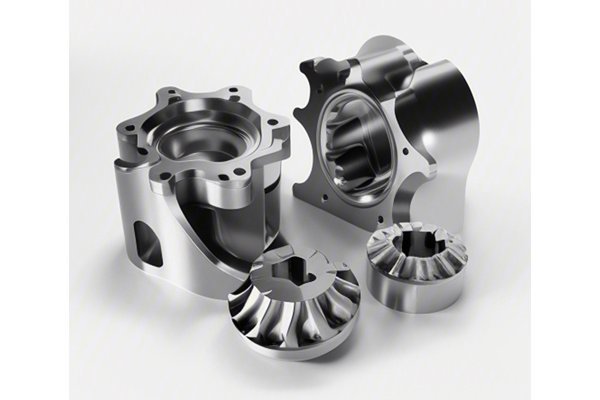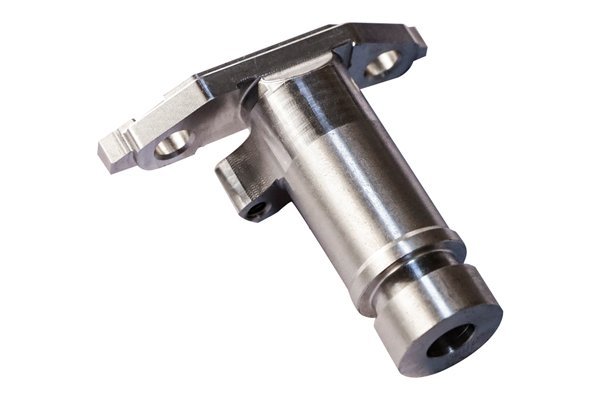Did you know that titanium is not only stronger than steel but also significantly lighter? This remarkable property makes it a sought-after material in industries like aerospace, medical, and automotive. As businesses aim to produce innovative and lightweight designs, the demand for efficient manufacturing processes becomes increasingly crucial. Among these processes, CNC (Computer Numerical Control) turning of titanium for custom prototypes stands out as a versatile and precise solution. But how does this method enhance prototype production? Let’s explore the ins and outs of CNC turning, its advantages, and how it becomes a game changer in custom titanium production.
Understanding CNC Turning
CNC turning is a subtractive manufacturing process that utilizes computer-controlled lathes to produce cylindrical parts by removing material from a rotating workpiece. The precision and consistency afforded by CNC technology make it the go-to method for creating complex shapes and tight tolerances.
The Basics of CNC Machines
Why Titanium?
Before diving into the specifics of CNC turning for titanium, it’s essential to understand why titanium is beneficial for custom prototypes.
Properties of Titanium
The CNC Turning Process for Titanium
Advantages of CNC Turning of Titanium for Prototypes
CNC turning provides multiple benefits that make it an ideal choice for producing titanium prototypes:
Precision and Accuracy
CNC machines operate with exceptional precision, capable of achieving tolerances measured in micrometers. This accuracy is vital when producing components that require interlocking parts or precise fittings.
Speed
CNC turning allows for rapid production cycles. Once the design is programmed into the machine, multiple parts can be produced quickly and efficiently, reducing time-to-market for innovations.
Flexibility
CNC turning supports rapid changes and iterations. If a design needs modification, the program can be easily adjusted without needing to create new tooling or fixtures.
Cost-Effectiveness
While titanium might appear more expensive than other metals, CNC turning reduces waste significantly. Its subtractive nature means that little material is lost, and the initial investment in CNC machinery is recouped over time through increased production efficiency.
Challenges and Solutions in CNC Turning of Titanium

Despite its many advantages, CNC turning titanium also presents unique challenges that engineers and manufacturers must address.
Tool Wear and Life
Titanium can be tough on cutting tools, leading to rapid wear.
Solution: Use high-quality carbide tooling specifically designed for titanium and implement proper coolant strategies to mitigate heat accumulation.
Thermal Properties
Titanium retains heat, which can lead to thermal distortion and affect tolerances.
Solution: Optimize the cutting parameters to maintain lower temperatures and use advanced cooling techniques, such as through-tool coolant, to keep the workpiece at a stable temperature.
Chip Formation
Poor chip formation can cause tool failure and affect surface finishes.
Solution: Implement optimal cutting speeds and feeds to produce manageable chips, preventing buildup that can compromise machining efficiency.
Applications of CNC-Turned Titanium Prototypes
The flexibility and reliability of CNC turning allow for its applications in numerous industries:
Case Study: Successful Implementation of CNC Turning in Aerospace
The Challenge: An aerospace manufacturer required a custom titanium component for an aircraft engine that demanded high precision and weight reduction.
The Solution: The manufacturer employed CNC turning technology, programming advanced toolpaths in the CNC lathe to create a lightweight yet strong part. The implementation not only achieved tight tolerances but also increased production speed.
Final Outcome: The prototype was tested and successfully cleared certification processes, leading to mass production and saving the company significant time and resources.
Future Trends in CNC Turning for Titanium
As technology continues to evolve, so does CNC turning for titanium prototypes. Emerging trends include:
CNC turning of titanium for custom prototypes represents a powerful blend of innovation, precision, and efficiency. By leveraging the unique properties of titanium and the advanced capabilities of CNC technology, manufacturers can create superior products poised for success in competitive markets.
The journey through CNC turning reveals not only the technical intricacies of the process but also the strategic advantages it provides in prototype production, especially as industries push for advancement and sustainability.
Understanding and embracing this manufacturing method is crucial for any business aiming to thrive in the modern landscape, making this blog an essential read for industry professionals looking to enhance their operations. By applying the techniques discussed and recognizing the advantages and challenges of CNC turning for titanium, you will be equipped to make informed decisions that drive your projects forward.






